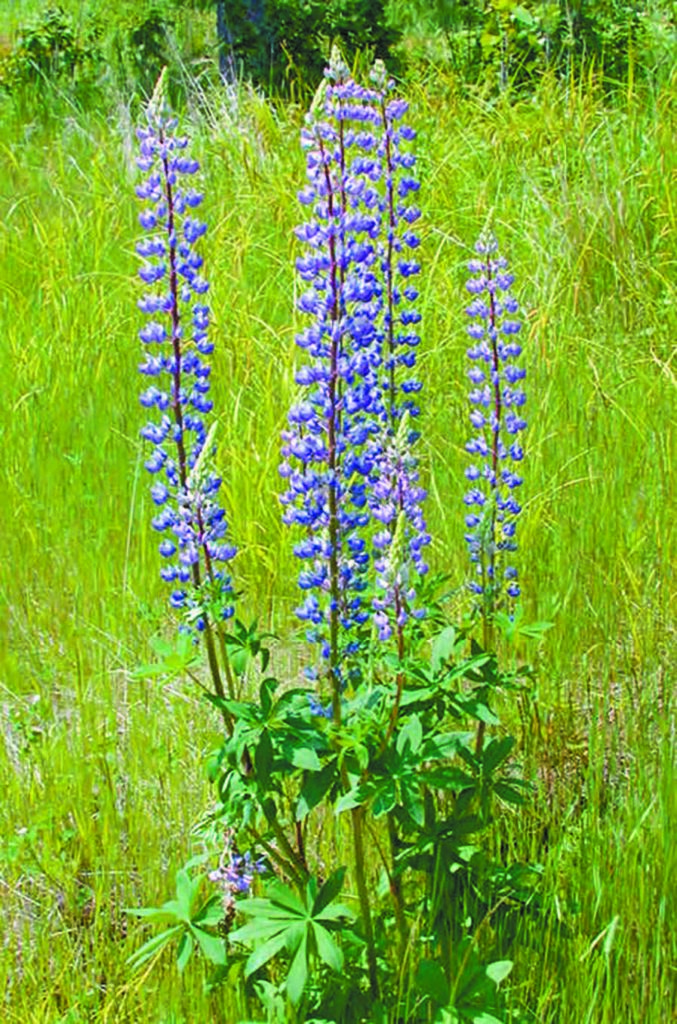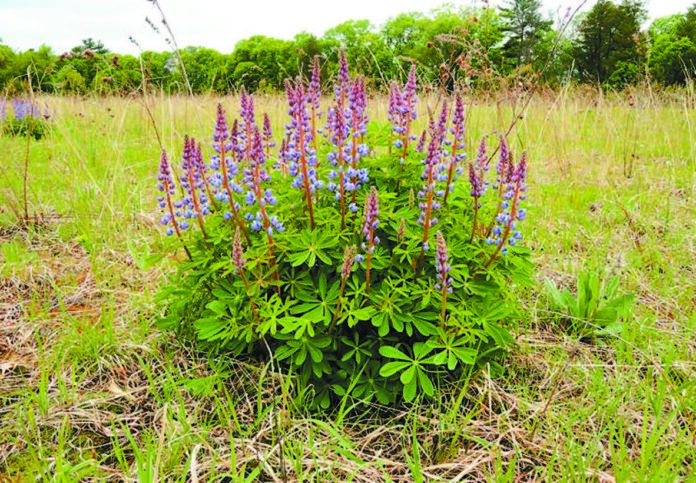Stephanie Hemphill, duluth-cisma@stewardshipnetwork.org
Wild Lupine (Lupinus perennis) is a native plant with showy blue and purple pea-like flowers that bloom in the spring. It flourishes in oak and jack pine savannahs in Minnesota and Wisconsin. Wild lupine grows in open, sunny areas with sandy soil, and because it is a legume, it increases nitrogen found in the soil.
In addition to supporting several butterfly species, wild lupine is the only host plant for the larvae of the endangered Karna blue butterfly.
But this lovely plant has a look-alike that is not native and does not host the Karna larvae. It’s Lupinus polyphyllus, which is native to the Western United States and was introduced to Minnesota by gardeners. These plants produce white, pink, red and purple flowers. Bigleaf lupines were planted along roads near the north shore of Lake Superior and have expanded from there. This plant readily outcompetes native plants and wildflowers, including the milkweed that monarch butterfly larvae depend on. Still, many people find them irresistible.

Bigleaf lupine is not on the Minnesota Noxious Weed list, so it is not illegal to plant it. But you might consider planting the native variety if you live where they flourish.
To identify wild lupine: Flowers grow along several spikes up to 8 inches long. Individual flowers are ¾ to 1 inch long and a typical pea-shape, on a short stem. The lower parts of the flower are blue. The upper parts may be blue, or two-toned blue and purple, or blue and white. Both upper and lower parts have many dark-er blue veins running through them. The lower parts are forced open by insects to reveal a horn-shaped stamen.
To identify Bigleaf lupine: Spikes are 6 to 18 inches long; flowers are ½-inch long on stems about ½ inch long. Flowers are typically blue to violet, but may be pink, white, or 2-tone.
The upper petal (standard) curls or folds back on the sides and is a bit smaller than the lateral wings below it. The spike may be tightly packed or looser, the flowers spiraling or nearly whorled around the stem.



